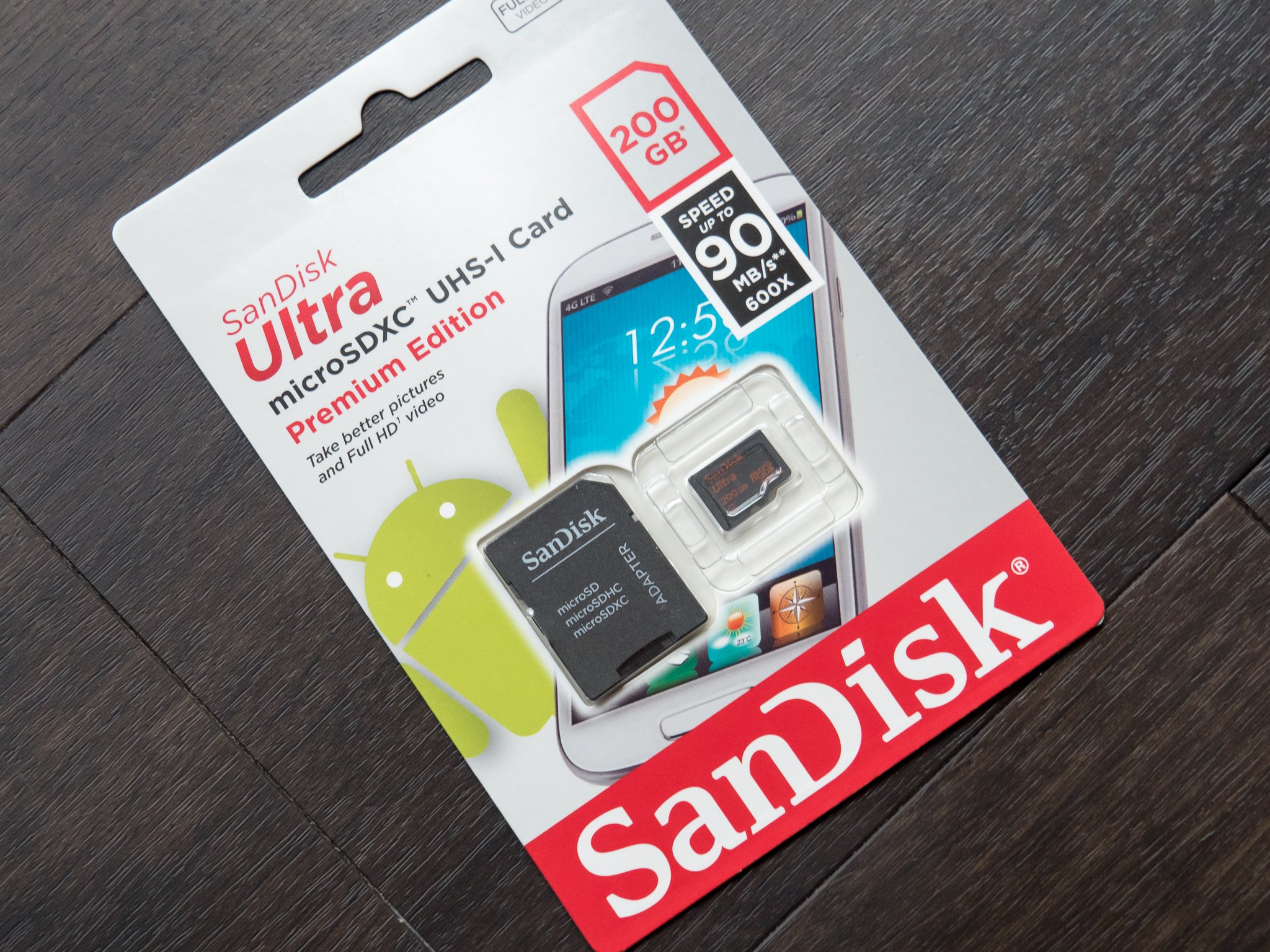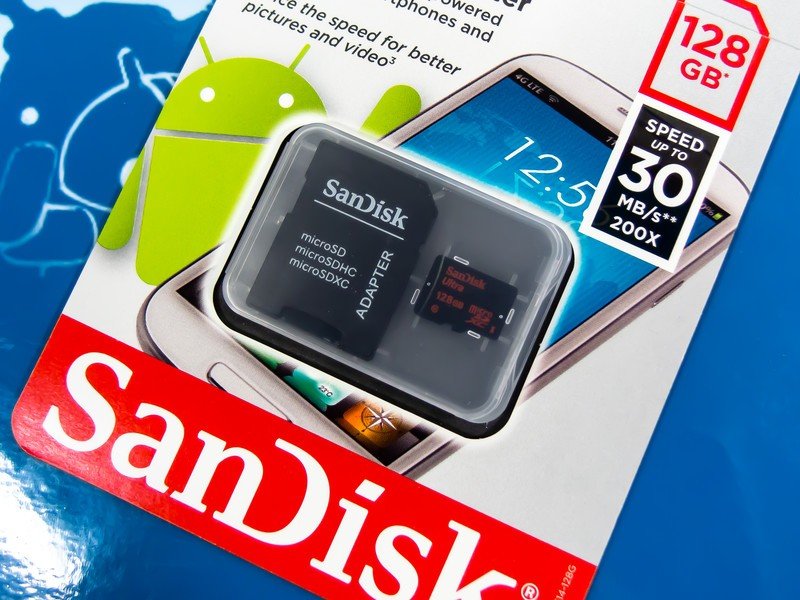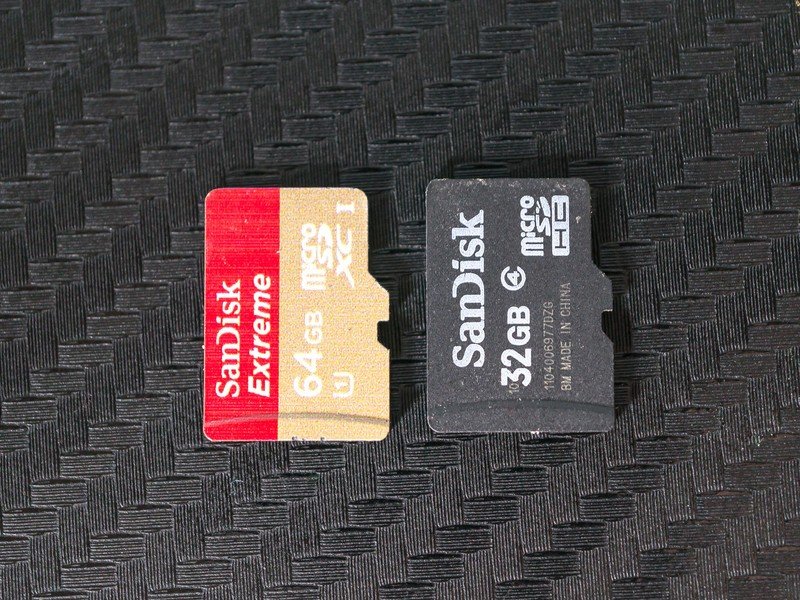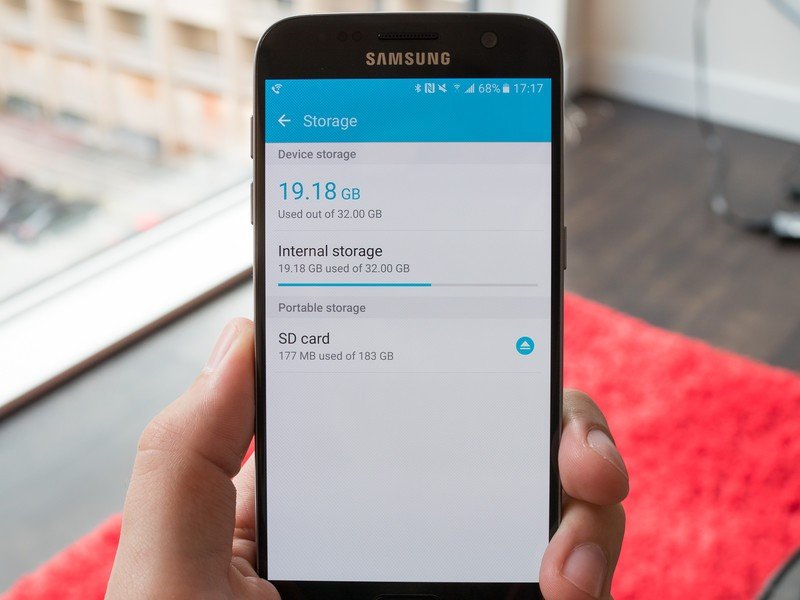Everything you need to know about SD card speeds and your phone

An SD card is the only way to get extra storage space inside your phone. If you need an extra 256GB of storage that doesn't need any wires or anything plugged in, you have no other option. But you have to do it right to make the most of it.
The single biggest decision to make when you're buying an SD card is the speed. The form factor is easy (you need a microSD card for your phone) and we all understand that more capacity means we can put more stuff on it. But unless the card you buy is fast enough, none of that matters. Let's see what fast enough really means and how you can tell how fast a card is rated.
A numbers game

Ignore the speed listed on the package because it's not realistic, Ever.
When you get a new SD card you'll see all sorts of claims on the package about the card's read and write speeds. Forget about the actual rating for a moment because you need to know that your phone will never be able to read data from the card or write data to the card as fast as the package says. Most of the time, nothing can meet those speeds in the real world. Consider those numbers the theoretical maximums that happened under perfect conditions while a unicorn was in the lab next to the tester.
Next, you need to know that the write speed is much more important than the read speed and those blurbs that say things like "up to 90MB per second" are talking about the read speed. Like every other thing that's sold, the company making the cards wants to advertise the best features and fastest and biggest everything. But that's OK because you'll know exactly what you want when we're done here!
The speed 'class' rating

All SD cards have a rating that tells us approximately how fast data can be read from an SD card. They are, in order from slowest to fastest:
- DS (up to 12.5 MB/s)
- HS (up to 25 MB/s)
- UHS-I (up to 104 MB/s)
- UHS-II (up to 312 MB/s
- UHS-3 (over 312 MB/s)
Don't get excited when you see those speed ratings and think you'll be able to move data at 312MB per second. Remember, those are the laboratory test maximum speeds that a computer program calculated. But those speeds are useful when you see how much faster or slower one type of card is compared to another. And to make things even more confusing there are also speed subclasses, and those are what most people use when they discuss anything to do with SD card performance.
- DS speed cards are rated (slowest to fastest) 2,4 or 6
- HS speed cards are rated 10
- Sometimes UHS cards are abbreviated as U1, U2, and U3
You'll find the speed class of the SD card listed on the packaging and printed on the card itself. Look for a ②, ④, ⑥ or ⑩ printed on DS or HS class cards and the actual rating on a UHS class card. And know that a UHS-3 (I have no idea why Roman Numerals weren't used for 3 when they were for I and II) card is about 30 times faster than a class 2 DS rated card.
Get the latest news from Android Central, your trusted companion in the world of Android
Here is where we are going to make things easy for you: Never buy a card slower than class 10 and always buy the fastest one you can afford.
Why your phone wants a fast card

This is simple once you stop overthinking things. The faster you can move data to and from your storage the less time it takes to do it.
A real world example would be copying a 600MB file to your SD card. A class 2 card would take about 200 seconds. A UHS-3 class card would take about 20 seconds to do it. While waiting for files to transfer is a horrible thing we go through from time to time, it matters even more to your phone.
Your phone is a computer. It is programmed to take input from you or through an app and do something cool with it. If you tell it to do something that needs it to copy a 600MB file, it has to wait until the file is copied before it can begin. Since it can't tell jokes or mix the perfect martini, it won't do anything while it is waiting. You can do something else while waiting on your phone, but nothing you can do will make the data move any faster.
While this is general information that's good for the way most of us use an SD card as a place to store media and documents, sometimes you want something even faster.
Running apps and using your camera
Imagine your SD card being used as the install location for an app and the place to store all the data for the app. You just doubled the wait time.
Realistically, you will be fine with a class 10 card most of the time even if you install apps to it. Your phone will store the parts of the app that make it run in its actual RAM so it only needs to load that once. And data created by an app is usually in very small files that can be read almost instantly. But there are apps that are huge, and some of them use many big files from their data resources when they run. You will see longer load times and wait times with something like a really big 3D game even with a UHS-3 card and they are magnified when you use one that's slower.
Your 4K videos will look better when you use a faster SD card.
Last but not least, your camera wants the fastest card available, especially if you take burst photos or shoot 4K video. Your phone camera has what's called a buffer. When you take a picture or video, the images and metadata and sound are all copied to that buffer because it's really fast to put them there. The buffer then writes all that data to the storage, and if you're using an SD card for camera storage those wait times come into play.
You'll be able to take more burst mode photos in sequence and that means less of them will be blurry. The faster the picture can move from the buffer to the card, the more free space is in the buffer for the camera to drop photos into. When that buffer is full, your camera can't do anything.
4K video will just look better with a faster card. 4K video files are gigantic and the data is pulled from the buffer a little differently. Since you're doing something live and in real time, waiting for a buffer to flush isn't an option. The movement from the camera buffer to the SD card is more like streaming video that a direct file copy. When you can't pull data from the buffer fast enough, you get fuzzy video, poor sound, skipped frames or audio and video not synchronizing very well. While 4K video is best when written to the phone's storage, you can get by with a fast UHS class SD card. You can't get by with a slower card.
If you take a lot of pictures or want to run apps from your SD card, buy a class UHS-3 card. Full stop. You will wish you bought a faster card eventually if you don't.
Don't be confused
Numbers and letters and the different ways an SD card can be used can be overwhelming if you're just buying an SD card to use and aren't worried about knowing what they all mean. But all that jazz aside, a few simple rules will make sure you don't buy the wrong thing.
- Buy a class 10 card or faster every time.
- If you like to take pictures and video, buy a class UHS-3 card.
- If you want to install apps on your SD card, buy a class UHS-3 card.
We wish all tech was this easy to sort out.

Jerry is an amateur woodworker and struggling shade tree mechanic. There's nothing he can't take apart, but many things he can't reassemble. You'll find him writing and speaking his loud opinion on Android Central and occasionally on Threads.
